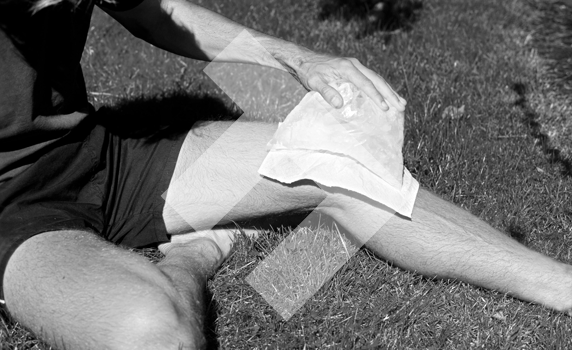Applying ice or heat to pain or an injury is a simple and effective way of treating your body, with few risks involved. However, there appears to be an overwhelming amount of confusion surrounding which of the two to apply to certain pains and injuries, and when to do so.
Vitabiotics, the vitamin supplement company, offer their advice on the different circumstances with which you should apply ice or heat, as well as the best methods of doing so.
Cryotherapy: The use of ice and cold therapy
The application of ice or cold is known as cryotherapy, and should be used to treat acute pain or new injuries. Damage to your body’s tissues will cause swelling and inflammation which for the majority of us creates pain and sometimes redness.
This process is completely natural and a way in which your body is telling you that something isn’t quite right, however you should try to reduce these symptoms to reduce the underlying injury, and this can be done through cryotherapy.
The pressing of cold temperature against the skins helps blood vessels to narrow, which in turn begins to slow the flow of blood. From this, the buildup of fluid in the area is reduced and any swelling or inflammation can be controlled to reduce the amount of pain you are in.
Cold therapy is also a great way of reducing any pain or inflammation from intense exercise. Be sure to apply cryotherapy immediately after exercise, if you find yourself suffering.
You should only ever apply cold therapy locally and never systemically. By this, we mean that the cold temperatures should be pressed against your skin, rather than immersing your body into cold water or ice. Use either an ice pack, a cooled gel pack, frozen packaging, or alternatively try massaging the area with ice. Limit the amount of time you spend applying cold temperatures to 20 minutes at the very most. You can repeat the process again after a few hours.
Thermotherapy: The use of warmth and heat therapy
Applying heat to your body is known as thermotherapy and unlike cryotherapy, should be used on overworked muscles, injuries that are at least a day old, or for chronic pain.
When our muscles are overworked – usually from exercise – they start to become starved of oxygen and so our bodies begin to produce lactic acid. Because of the lack of oxygen, blood flow slows down and the acid becomes fixed in that area. This process is what causes aches and pains to our muscles, but using heat on the area can help to relax sore muscles, by dilating blood vessels, stimulating blood flow, removing lactic acid and relaxing any spasms.
The same can be said if you suffer from chronic pain. When heat is applied to the affected area, the blood flow is increased and this helps to remove any toxins that may be present. Not only that, but the warming temperature can soothe and relax the area, reducing the stiffness of muscles. If you suffer from chronic pain but are hoping to continue exercising, use heat therapy before you exercise.
Unlike cryotherapy that can only be used locally, thermotherapy can be used both locally and systemically. This is when you immerse yourself or the affected area in a warm bath, shower or sauna, for example. You should always avoid immersing yourself for too long. Alternatively, a heat pad, warm damp towel, hot water bottle or heat wrap will also work effectively, just make sure you don’t apply anything too hot that could burn your skin.
It’s important to understand the differences between the effects of heat and ice, as well as which of the two you should use on your injuries. Using the wrong type of therapy can sometimes make your injuries worse, so follow this handy guide to reduce your aches and pains, and to continue living a fit and healthy lifestyle.
Of course it goes without saying that if you are concerned about any time of pain or injury, or if it’s not getting better, you should seek advice from your doctor or medical professional.
![]()
 Instagram
Instagram Pinterest
Pinterest Facebook
Facebook Twitter
Twitter YouTube
YouTube




 Paul
Paul 



